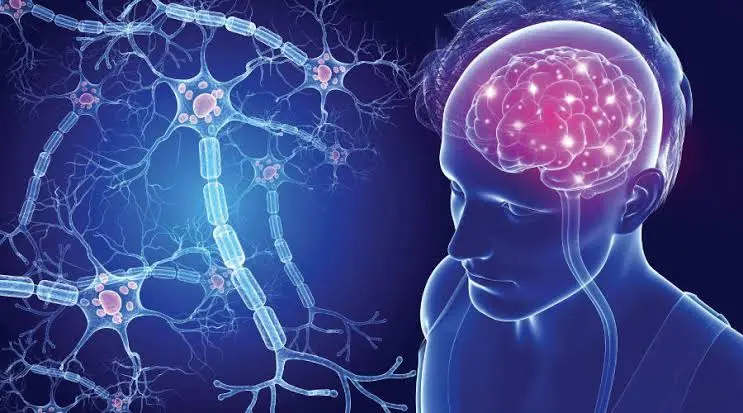Is multiple sclerosis hereditary disease

If you tested your DNA with a personal genomics service like 23andMe, AncestryDNA, FamilyTreeDNA, MyHeritage or another testing company, you can learn more about your risk factors for hundreds of diseases. By clicking the button above ⬆️, you can upload your raw DNA data file and receive a personalized 250-page health report with research links that is the most comprehensive.
The presence of lesions on the brain and spinal cord is indicative of multiple sclerosis, a condition where nerve cell damage and degradation to the myelin sheath occur. Multiple sclerosis falls under the category of autoimmune disorders as it arises from aberrant immune system activity targeting nervous tissue within one's own body.
Although MS is not a hereditary illness that gets transferred across generations, individuals have the possibility of inheriting genetic susceptibility. Hence, unlike traits such as black hair or dimples that are inherited in a straightforward manner; MS does not follow this pattern genetically.
While the exact cause of multiple sclerosis is uncertain, numerous genes are believed to play a role in determining its risk. The most significant genetic factors linked with an increased likelihood for developing this disease are alterations within the HLA-DRB1 gene. Besides these variations, other contributors that elevate a person's chances of contracting MS encompass changes inside the IL7R gene and environmental triggers such as exposure to Epstein-Barr virus, insufficient vitamin D levels or smoking habits.
The family of genes known as the human leukocyte antigen (HLA) complex contains the HLA-DRB1 gene. Its purpose is to aid in distinguishing proteins created by foreign invaders, such as viruses and bacteria from those generated within the body's confines. Regular variations exist among each HLA gene enabling a person’s immune system to respond effectively against an extensive variety of external proteins. While changes in numerous HLA genes are connected with heightened vulnerability towards multiple sclerosis, one specific variant -HLD-DRB1*15:01 – has been identified as being most strongly associated with genetic risk factors for this disease.
Instructions for creating two receptor proteins, interleukin 7 (IL-7) and thymic stromal lymphopoietin (TSLP), are provided by TheIL7R gene. These receptors exist within the cell membrane of immune cells and encourage signaling pathways which promote the proliferation and survival of these same immune cells. In multiple sclerosis, a genetic variation results in an IL-7 receptor that is located inside the cell rather than in its membrane; it remains unclear if this change affects TSLP reception as well.
The involvement of the HLA-DRB1and IL-7R genes in the immune system suggests a possible connection between alterations within them and autoimmune responses that harm nerve cells and myelin sheath, ultimately causing multiple sclerosis symptoms. Nevertheless, their precise contribution to this condition's progression remains uncertain at present.
Follow the link of the selected polymorphism to read a brief description of how the selected polymorphism affects Multiple sclerosis and see a list of existing studies.
SNP polymorphisms related to the topic Multiple sclerosis:
| rs7923837 | Variations in the HHEX gene are associated with an increased risk of developing type 2 diabetes, affects acute glucose-stimulated insulin release. |
| rs6897932 | Variation in the IL7RA gene accounts for susceptibility to multiple sclerosis and type 1 diabetes. |
| rs3135388 | Variation in the ATP-binding cassette transporter gene is significantly associated with susceptibility to multiple sclerosis (3-6 fold increase in risk). |
| rs4728142 | Validation of IRF5 as a multiple sclerosis risk gene: putative role in human herpes virus-6 infection. |
| rs2858331 | Together with the rs4988889 gene breakage, it is a diagnostic criterion for celiac disease. |
| rs10492972 | The polymorphic locus rs10492972 of the KIF1B gene is associated with multiple sclerosis. |
| rs8702 | The melastatin genetic variant plays a central role in magnesium homeostasis, which is critical for maintaining glucose and insulin metabolism. |
| rs3135391 | The major histocompatibility class I locus contributes to susceptibility to multiple sclerosis (3-6 times higher risk). |
| rs12722489 | The IL2RA and IL7RA genes account for predisposition to multiple sclerosis. |
| rs2300747 | The CD58 genetic variant is associated with risk of multiple sclerosis and rheumatoid arthritis. |
| rs1321172 | Slightly higher (1.08 times) risk of multiple sclerosis. |
| rs1800693 | Slight (1.4-fold) increase in risk of multiple sclerosis |
| rs926103 | SH2D2A gene breakage may contribute to susceptibility to multiple sclerosis. |
| rs630923 | Serum levels of the chemokine CXCL13 associated with multiple sclerosis. |
| rs12708716 | Polymorphisms influence the risk of developing type 1 diabetes. |
| rs6604026 | Polymorphisms associated with susceptibility to multiple sclerosis do not affect measures of disease severity. |
| rs9282860 | Liver B1 kinase kinase polymorphism increases 2-fold risk of multiple sclerosis. |
| rs1077667 | LIGHT genetic variation is associated with susceptibility to multiple sclerosis. |
| rs10984447 | Increased risk up to 1.4 times of multiple sclerosis disease. |
| rs2069763 | Increased risk of autoimmune diseases - systemic lupus erythematosus, vasculitis, celiac disease, and newly diagnosed diabetes mellitus after transplantation. |
| rs9271366 | HLA-DPB1 gene polymorphism is associated with susceptibility to multiple sclerosis. |
| rs7775228 | HLA DQ2.2 genes play an important role in many autoimmune diseases such as celiac disease, type 1 diabetes, rheumatoid arthritis, multiple sclerosis, psoriasis and others. |
| rs17445836 | Genetic variation in the IRF8 region is associated with Behcet's disease, multiple sclerosis and systemic lupus erythematosus. |
| rs2104286 | Genetic heterogeneity of IL2RA indicates susceptibility to multiple sclerosis and susceptibility to type 1 diabetes. |
| rs4149584 | Genetic association of TNFRSF1A variant with multiple sclerosis, odds ratio is 1.6 |
| rs6498169 | CLEC16A variant, is associated with autoimmune diseases, particularly multiple sclerosis and type I diabetes. |
| rs9282641 | CD86 polymorphism is associated with susceptibility to multiple sclerosis. |
| rs2283792 | An additional locus of interest in multiple sclerosis. |
| rs3194051 | Alteration of the interleukin 7 receptor (IL7R) alpha chain influences the risk of multiple sclerosis. |
| rs6680578 | A variant of the ecotropic viral integration 5 (EVI5) gene is associated with multiple sclerosis. |
| rs17066096 | A rare coding variant of the IL22RA2 signalling peptide is associated with multiple sclerosis risk. |
| rs17174870 | A polymorphism in the MERTK receptor tyrosine kinase gene is associated with susceptibility to multiple sclerosis. |
| rs703842 | A gene associated with vitamin D, serum vitamin D concentration and risk of multiple sclerosis. |
| rs7592330 | |
| rs7789940 | |
| rs744166 | |
| rs354033 | |
| rs180515 | |
| rs2546890 | |
| rs228614 | |
| rs233100 | |
| rs874628 | |
| rs12212193 | |
| rs12368653 | |
| rs6718520 | |
| rs669607 | |
| rs6896969 | |
| rs9891119 | |
| rs12466022 | |
| rs2119704 | |
| rs4285028 | |
| rs4648356 | |
| rs908821 | |
| rs3780792 | |
| rs2040406 | |
| rs1335532 | |
| rs11581062 | |
| rs11962089 | |
| rs3129889 | |
| rs290986 | |
| rs10466829 | |
| rs2744148 | |
| rs12487066 | |
| rs7577363 | |
| rs7536563 | |
| rs12044852 | |
| rs11164838 | |
| rs10735781 | |
| rs4763655 | |
| rs10975200 | |
| rs4959039 | |
| rs9657904 | |
| rs10201872 | |
| rs1386330 | |
| rs1557351 | |
| rs17157903 | |
| rs12047808 | |
| rs2842483 | |
| rs3913163 | |
| rs77360604 | |
| rs13115869 | |
| rs2200997 | |
| rs10519631 | |
| rs1364920 | |
| rs2636670 | |
| rs2636683 | |
| rs336408 | |
| rs2172023 | |
| rs79442729 | |
| rs1992418 | |
| rs12504681 | |
| rs7295402 | |
| rs2216228 | |
| rs10841979 | |
| rs2268858 | |
| rs2300726 | |
| rs10459079 | |
| rs2418058 | |
| rs12817074 | |
| rs2728827 | |
| rs2268861 | |
| rs4762899 | |
| rs2300731 | |
| rs7964012 | |
| rs704219 | |
| rs6993386 | |
| rs3129934 | |
| rs140915863 | |
| rs201921967 | |
| rs765866317 | |
| rs870849 | |
| rs2041670 | |
| rs11117432 | |
| rs929230 | |
| rs12722561 | |
| rs3807306 | |
| rs2155219 | |
| rs9275572 | |
| rs3130058 | |
| rs3853601 | |
| rs2239709 | |
| rs3093976 | |
| rs3093948 | |
| rs2516393 | |
| rs2734583 | |
| rs660895 | |
| rs35445101 | |
| rs2303759 | |
| rs4613763 | |
| rs6984045 | |
| rs2243123 | |
| rs2019960 | |
| rs2920001 | |
| rs1841770 | |
| rs7238078 | |
| rs13192841 | |
| rs10411936 | |
| rs771767 | |
| rs17090640 | |
| rs1821625 | |
| rs12513380 | |
| rs3761959 | |
| rs2425752 | |
| rs4410871 | |
| rs170934 | |
| rs8070463 | |
| rs9292777 | |
| rs882300 | |
| rs7595037 | |
| rs3135338 | |
| rs2300603 | |
| rs2293152 | |
| rs4939490 | |
| rs17824933 | |
| rs11154801 | |
| rs7255066 | |
| rs806321 | |
| rs13333054 | |
| rs6952809 | |
| rs12048904 | |
| rs11810217 | |
| rs650258 | |
| rs2248359 | |
| rs2523393 | |
| rs2293370 | |
About The Author
Li DaliLi Dali, a National Foundation for Outstanding Youth Fund recipient, is a researcher at the School of Life Sciences in East China Normal University. He earned his PhD in genetics from Hunan Normal University in 2007 and conducted collaborative research at Texas A&M University during his doctoral studies. Li Dali and his team have optimized and innovated gene editing technology, leading to the establishment of a world-class system for constructing gene editing disease models.


